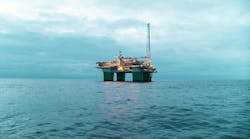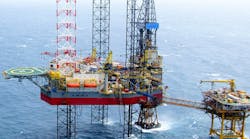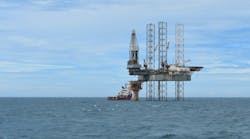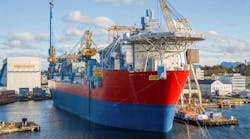When discussing the future of the oil and gas industry, technology is a prominent topic. The application of AI, big data and digitilization is seen to be driving the industry forward, allowing for more efficient, cost-effective, and safe operations.
While this technology offers significant advantages, the human element of any activity, and particularly crane operations, will always be vital.
The world is undoubtedly captivated by advancing technology across all aspects of daily life, from the phones we use to the cars we drive. Last year, Waymo, a company derived from Google, was the first to commercialize a fully autonomous taxi service in the United States.
It would appear the future is here, and this comes with a perception that manpower will soon be replaced by machines.
Over the past 30 years, technology has played a huge role in improving crane operations in the offshore arena. However, it is people which have continually remained, quite literally, in the driving seat of all activity. Technology offers many merits, but it does not have the capability to think outside the box and recognize alternative or creative options like a human.
While the oil and gas industry is often known for being slow to adopt new technology, it has made significant strides as the benefits of AI and digitilization continue to be realized. Projects last year included an autonomous robot which was deployed to an offshore rig in the North Sea to carry out tasks such as visual inspections and detecting gas leaks; and Shell announced its selection of C3 IoT with Microsoft Azure as its AI platform across upstream and downstream operations. The operator made the investment in a bid to enhance productivity and create greater economic value across its assets.
The introduction of such automation to the mainstream market may lead to an assumption that machine power will soon overtake manpower and it could eventually replace safety critical roles such as crane operators. However, this could not be further from the truth. While the industry is always evolving, operations will continue to be managed and led by trained, competent individuals.
Cranes are a vital piece of equipment on any offshore asset. They are the link between the sea and the platform, from lifting essential cargo like food and water, to large scale equipment which is used in production operations.
In previous years, the earlier friction clutch mechanical crane models were very manual and required the operator to use heavy pedals to control lifts. This was physically intensive for the person operating and could often lead to muscle and ligament strains from hours of operations. Technology has drastically improved this equipment and modern cranes now use robust hydraulics which has taken much of the physical aspect, and risk of injury, out of crane operating, while increasing the overall functionality of the equipment.
One of the most recent systems to be implemented in offshore cranes is Optilift. The system provides the crane operator with real-time information on the current sea state and weather conditions. It uses advanced speed camera software, much like what we see on the roads, to communicate with the operator so they are aware of any external factors which may not be visible. This provides valuable information that allows the driver to make decisions by mitigating risk. But the final judgement call as to whether a load is safe to be lifted has, and will always lie with the operator.
An area in which technology has proved particularly valuable for crane operations is training. Novice crane operators were traditionally trained using onshore pedestal cranes before being deployed offshore. While this method is still highly effective, simulators have become an integral aspect for training and development in recent years.
Simulators allow for beginner crane operators to be familiarized with many of the external factors met in the field in a controlled and interactive environment. When used in conjunction with the onshore crane, operators are more prepared than ever for the offshore environment.
The combination of both has enhanced our training operations significantly, allowing trainees to experience many of the situations encountered in-field, such as strong winds and high wave height. In the future, the use of virtual reality may even be introduced to crane operator training programs, to provide an even more immersive and realistic experience.
While technology has provided huge opportunities for offshore crane operations, it is only a proficiently trained person which can be fully in control during operations. It is vital we continue to advance as an industry and adopt new innovations, however technology will never replace the most valuable asset of any business – its people.
Ewen Kerr
Chief Technical Officer
Sparrows Group





